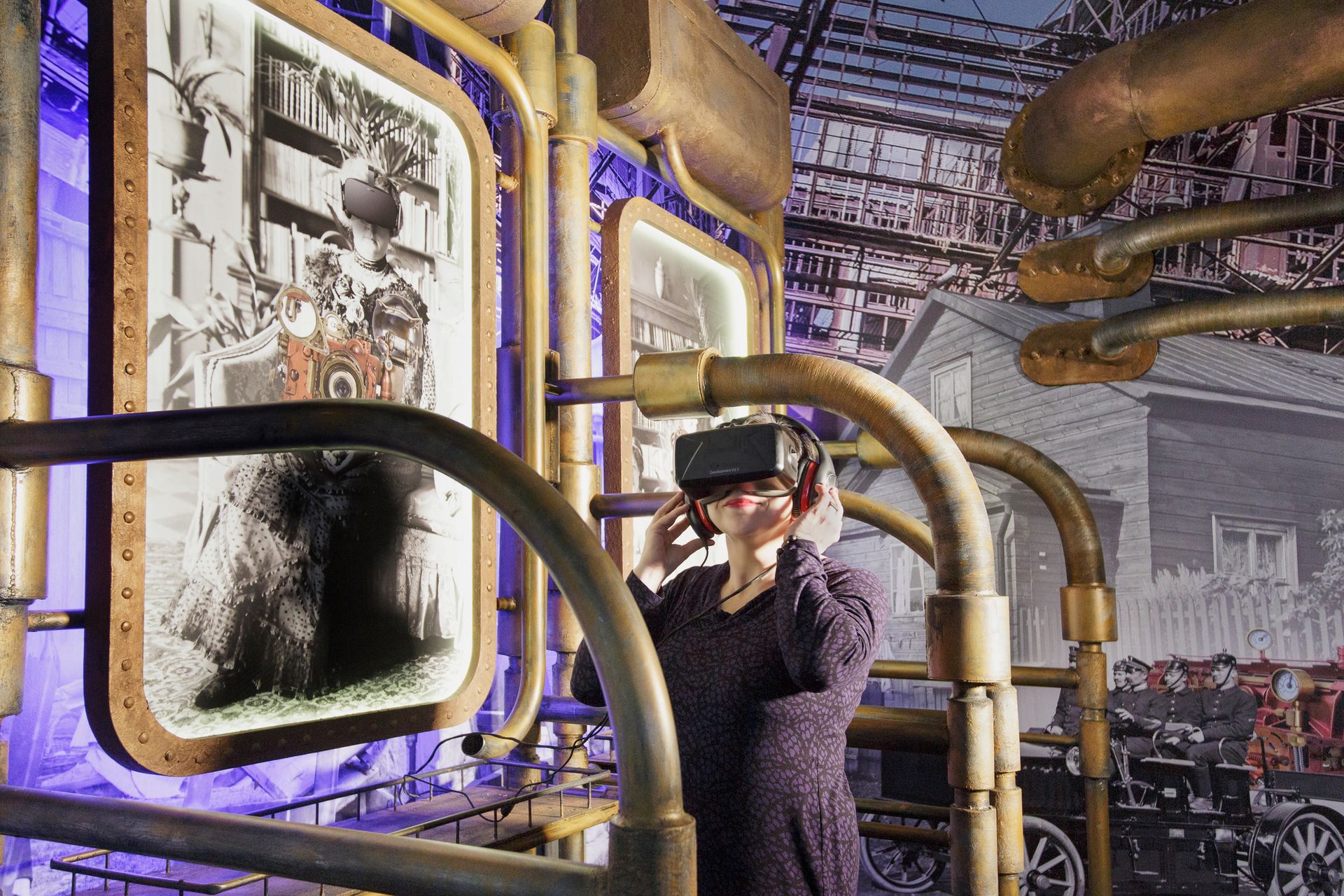Helsinki is experiencing a boom in museum building. The Helsinki City Museum, which reopened its doors to 2,500 visitors on 12 May, is the latest cultural initiative aimed at attracting more tourists to the Finnish capital. “Helsinki has realised that culture affects tourism, the economy and the whole well-being of a city,” says Tiina Merisalo, the director of the museum.
Half a block of the oldest part of Helsinki has been joined together to create the new Helsinki City Museum, which consists of several immersive spaces designed by the interior design firm Kakadu Oy. Each space transports you back to a different period over the past century: a 1980s themed meeting room comes complete with authentic wallpaper, a black leather couch and a retro exercise bike; a 1930s schoolroom is filled with wooden desks; and Grandma’s house is a carbon copy of a 1970s abode. Visit on the weekend and you will even find a real-life granny in residence there.
Meanwhile, a virtual reality time machine, produced in collaboration with the Finnish software company Futurice, whisks visitors on a journey through the history of Helsinki via the museum’s collection of photographs.

The city of Helsinki has footed 95% of the €13m renovation and exhibition cost, according to Ritva Viljanen, the deputy mayor—a move she is proud of at a time when the Finnish state is slashing budgets for the arts. “Helsinki is enjoying a boom in museums. The city believes in culture, we are increasing our cultural budget, not cutting it,” she says, noting that private investors and an influx of tax-paying residents are helping make up the shortfall (the local population is growing at 1.7%, the highest rate in Europe).
The opening follows that of the new Helsinki Art Museum, which launched last year in a building that formerly housed Olympic tennis courts at a cost of €3.6m. Other cultural initiatives largely funded by the city of Helsinki include a new €98m library, due to open in 2017, and a €28m Dance House, slated to open in 2020.
Private investors are also stepping up. The Amos Anderson Foundation, which was established after the eponymous newspaper tycoon died in 1961, is funding a €50m museum for contemporary art, which is due to open in 2018. The new 2,000 sq. m museum will be called Amos Rex.
But will the flurry of new museums and cultural institutions be joined by the long-awaited Guggenheim Helsinki? “It’s a political hot potato,” Viljanen says. “It’s a big investment and we have already spent a lot on culture.” The Finnish state is currently considering a new proposal from the Guggenheim after the municipal board rejected the museum’s original plan in 2012 because it was considered too expensive for Helsinki.
Viljanen says private individuals and companies have now agreed to invest €28m in the €130m building, but the state and city of Helsinki are still deciding how much they can afford to contribute, if anything. “The Guggenheim would be great for Helsinki. It would strengthen our own cultural institutions and also bring new people to Helsinki,” she says, noting that tourism is the fastest growing industry in the world. “As much as 40% of tourists visit London for culture, which is something to aspire to.”
Merisalo says she would also welcome the Guggenheim; its proposed waterfront location is nearby the Helsinki City Museum. But she also sounds a note of caution: “It’s a question of funding. The economy is not doing so well and the state is cutting its budgets. How can it invest at this point in time?”

